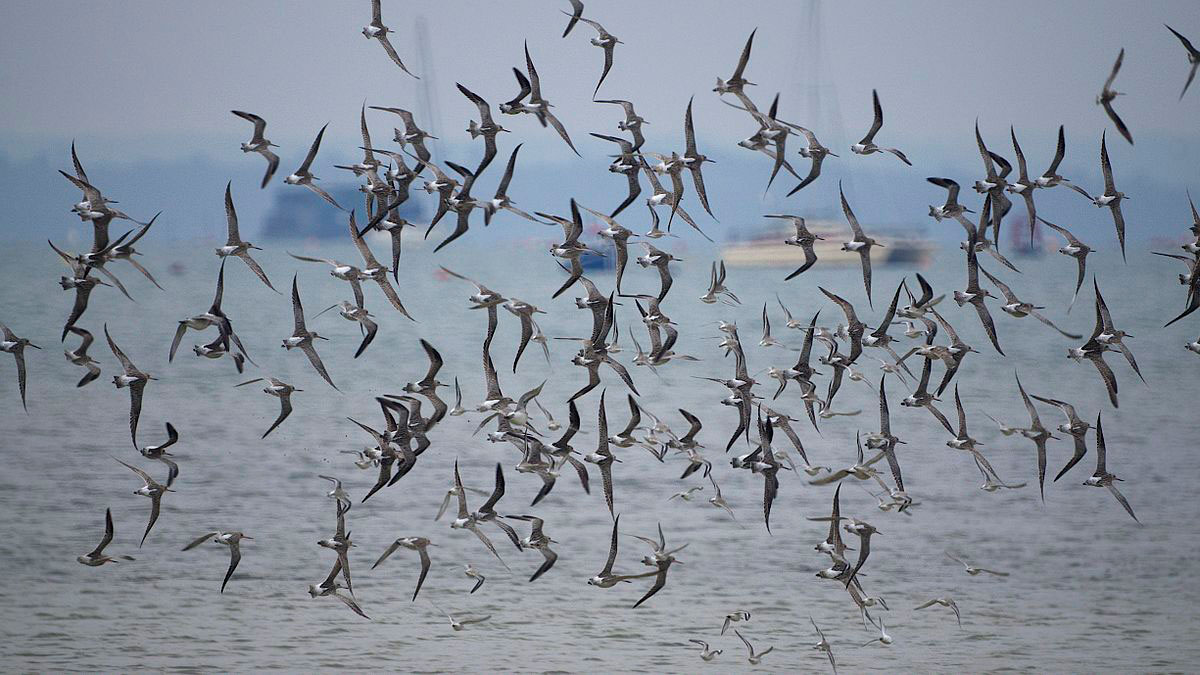
Bar-Tailed Godwit (Limosa lapponica)
All was eerily quiet on a clear still night in Cranleigh during lockdown.
No cars, no planes, no distant loud music, and no excited folk returning home from the bars. It was yet another strange Saturday evening.
There had been no live football either so instead of Match of The Day I was sitting in the garden towards the end of a two-hour vigil back in April, listening for any night migrants, which often call as they fly overhead.
This year, with the sound of silence such a feature of the pandemic – except for when we all cheered the NHS at 8pm on Thursday nights – the prospects looked good for hearing something unusual.
A few lucky birders around the country, including Surrey, had in the early hours of previous days joyously heard Arctic tundra-bound wading birds calling as they sped above them in the darkness. These included one species that’s a real high-flyer! The Bar-tailed Godwit.
It is one of the world’s highest-flying birds, reaching altitudes of up to 6,000 metres (3.73 miles) and some of its species make the longest non-stop flight of any bird. Incredibly, they fly continuously for eight to nine days and nights.
These remarkable birds, about the size of a super sleek Wood Pigeon, cover more than 11,000 kilometres (7,000 miles) from Alaska, over the Pacific Ocean, and do not rest or ‘refuel’ until they land in New Zealand. The fact they do it non-stop was unknown until relatively recently.
Little wonder then that, come September, the church bells in New Zealand ring out for half an hour to welcome the Spring and the return of the first Bar-tailed Godwits after such epic journeys.
This is a highly threatened species, thanks to human disturbance and development of its feeding grounds. When I visited a nature reserve in Miranda on the North Island I bumped into two people who were employed to make a daily count of each and every one of a four-figure number of jostling individuals feeding on worms, molluscs and crustaceans in the muddy lagoons.

Bar-Tailed Godwit flock in flight © Ian Kirk, Broadstone, Dorset UK
For the return journey they take a much longer route around the western edge of the Pacific and stop off at the Yellow Sea for food and a breather. Taking this route enables them to arrive in good shape for breeding in Alaska.
Anyway, back to my garden. As I gazed at the stars I became aware of a distant sound of bird calls from the south-west. And they were approaching all the time.
‘Kiwee, kiwee, kiwee’. These were exactly the sounds I had been listening to earlier on the internet while reminding myself of the Bar-tailed Godwit’s flight call. I could hardly believe my ears. Louder and louder they got until unknown numbers flew over in a north-westerly direction, calling excitedly and constantly as they streamed by above and away.
I presumed they were nothing like three miles high! They sounded like they could be only about three times the tree height but as I could not see them I will never know.
Was it a small flock calling repeatedly or a huge flock of birds, each calling intermittently?
There was no way of being certain but the whole performance lasted about a minute. Gradually their calls got weaker and weaker and then disappeared into the night. I was so excited I got in a bit of a fluster and annoyingly forgot to tape them. I waited up a little longer in case the magic was repeated by there were to be no more.
Bar-tailed Godwit has not been recorded in the Cranleigh area before, as far as I know, so even though I never saw them I was well happy.
If I had seen them then the most colourful males would have been in summer plumage with rufous orange underparts, greyish and black wings, a long-upturned bill and – you guessed it – a barred tail.
But I felt privileged enough just to hear this passage migrant that is a such a very scarce visitor to land-locked counties such as Surrey. This month some of them may well be on the return leg but I doubt I will be waiting up for them. To witness them once here could be a once in a lifetime experience.
Twitter – @Crane_Spotter
Click here to see all of Robin Stride’s previous Crane Spotters.











